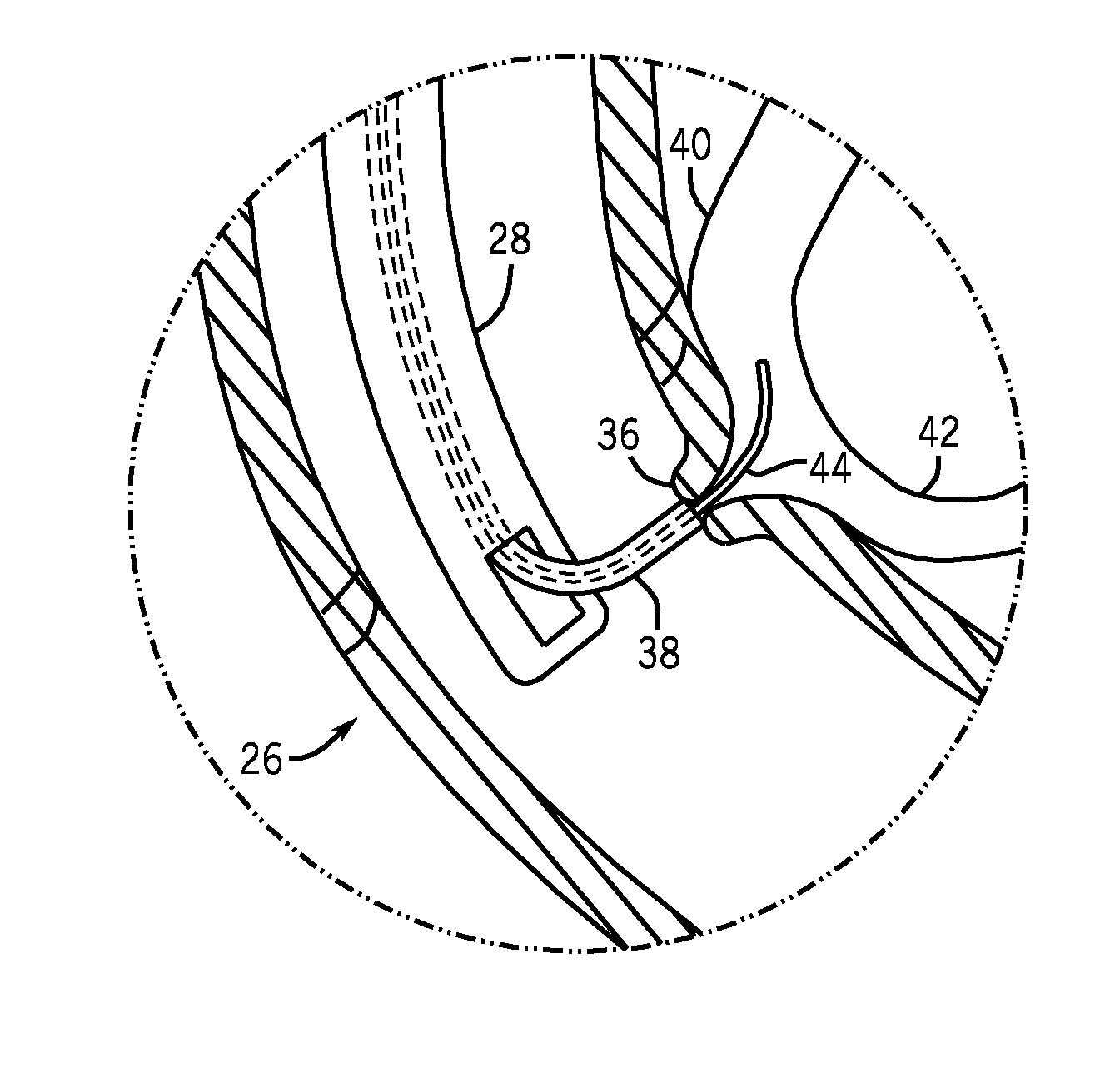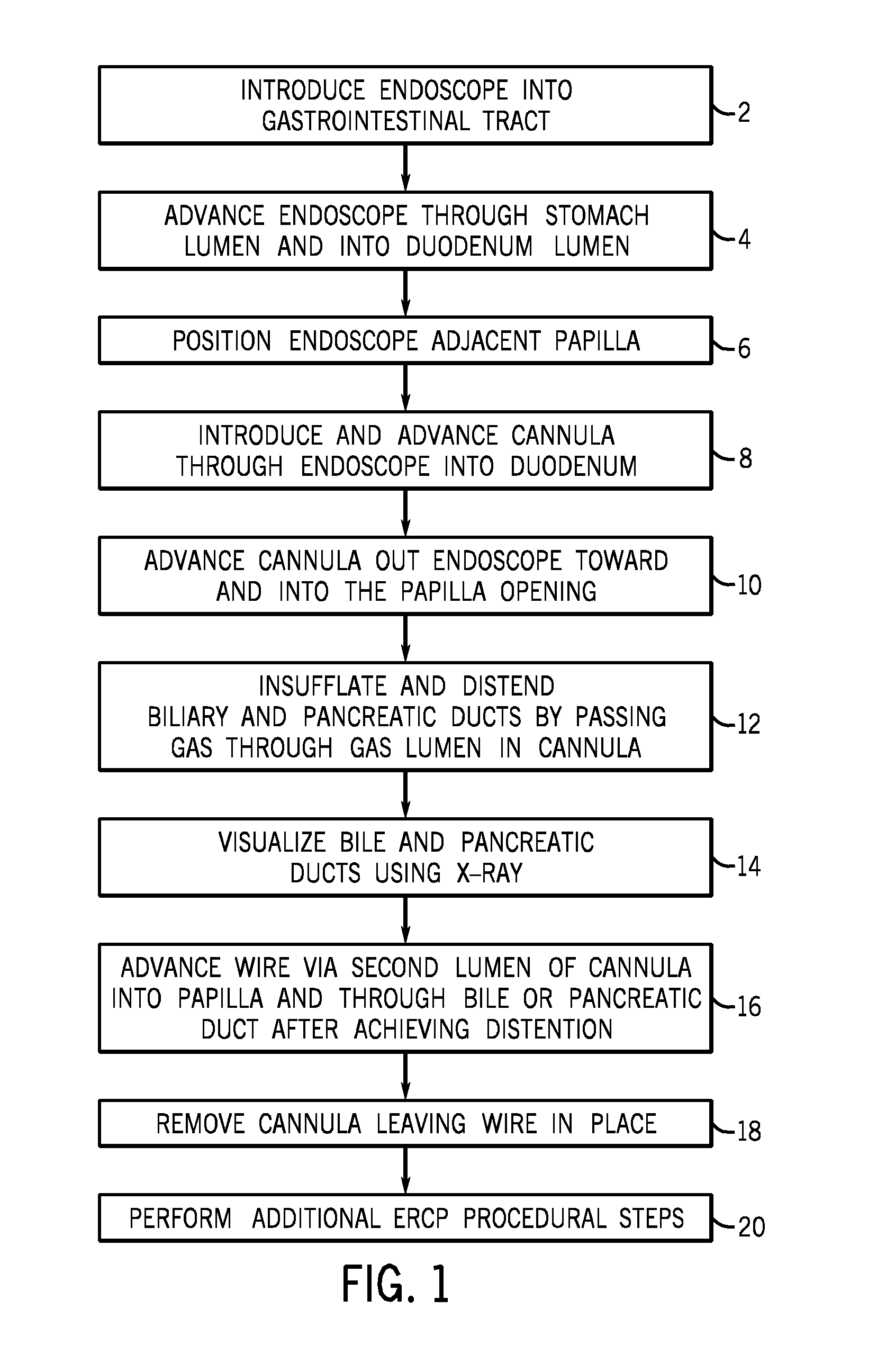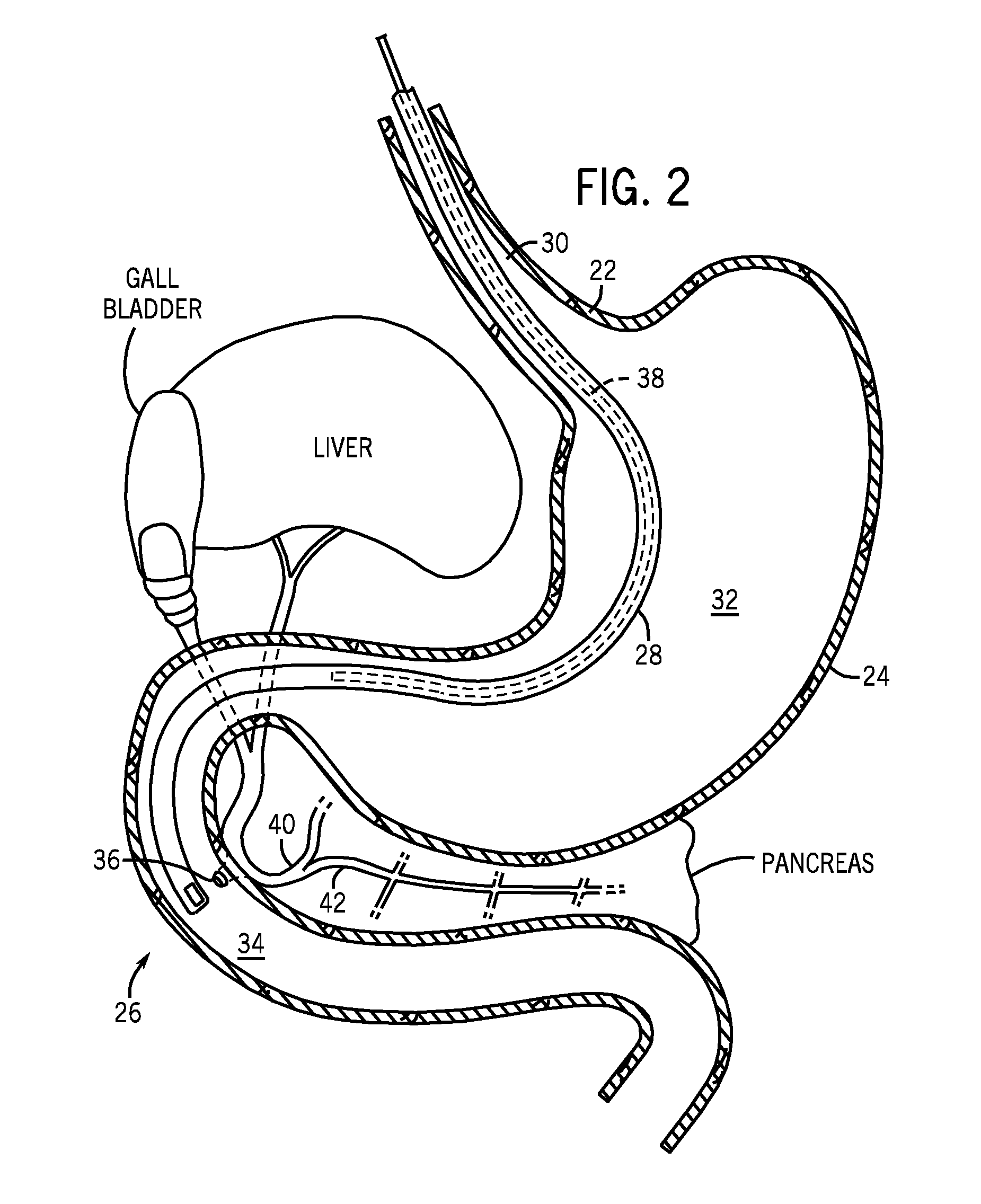Methods and apparatuses for endoscopic retrograde cholangiopancreatography
a retrograde cholangiopancreatography and endoscopic technology, applied in the field of methods and apparatuses for endoscopic retrograde cholangiopancreatography, can solve the problems of increased pressure, significant risk for patients, and inability to adequately treat the underlying condition, so as to achieve the effect of x-ray visualization and well tolerated
- Summary
- Abstract
- Description
- Claims
- Application Information
AI Technical Summary
Benefits of technology
Problems solved by technology
Method used
Image
Examples
Embodiment Construction
[0024]FIG. 1 depicts a block diagram of the steps of the method of distending the biliary and pancreatic ducts in the performance of ERCP (endoscopic retrograde cholangiopancreatography) by insufflating the biliary and pancreatic ducts in accordance with the present invention. FIGS. 2, 3 and 4 depict cross-sectional views of the gastrointestinal tract corresponding to the steps of the method depicted in FIG. 1, and as such, FIGS. 2, 3 and 4 will be discussed as they correspond to the steps of the method depicted in FIG. 1. In accordance with one illustrative embodiment, steps 2-20 are performed sequentially, but it will be clear to those skilled in the art, after reading this disclosure, how to make and use alternative embodiments of the present invention in which some of the steps 2-20 of the method are performed in a different order.
[0025]While describing the steps of the method in FIG. 1, reference is made to FIGS. 2, 3 and 4. Esophagus 22, stomach 24 and duodenum 26 of the gastr...
PUM
 Login to View More
Login to View More Abstract
Description
Claims
Application Information
 Login to View More
Login to View More - R&D
- Intellectual Property
- Life Sciences
- Materials
- Tech Scout
- Unparalleled Data Quality
- Higher Quality Content
- 60% Fewer Hallucinations
Browse by: Latest US Patents, China's latest patents, Technical Efficacy Thesaurus, Application Domain, Technology Topic, Popular Technical Reports.
© 2025 PatSnap. All rights reserved.Legal|Privacy policy|Modern Slavery Act Transparency Statement|Sitemap|About US| Contact US: help@patsnap.com



